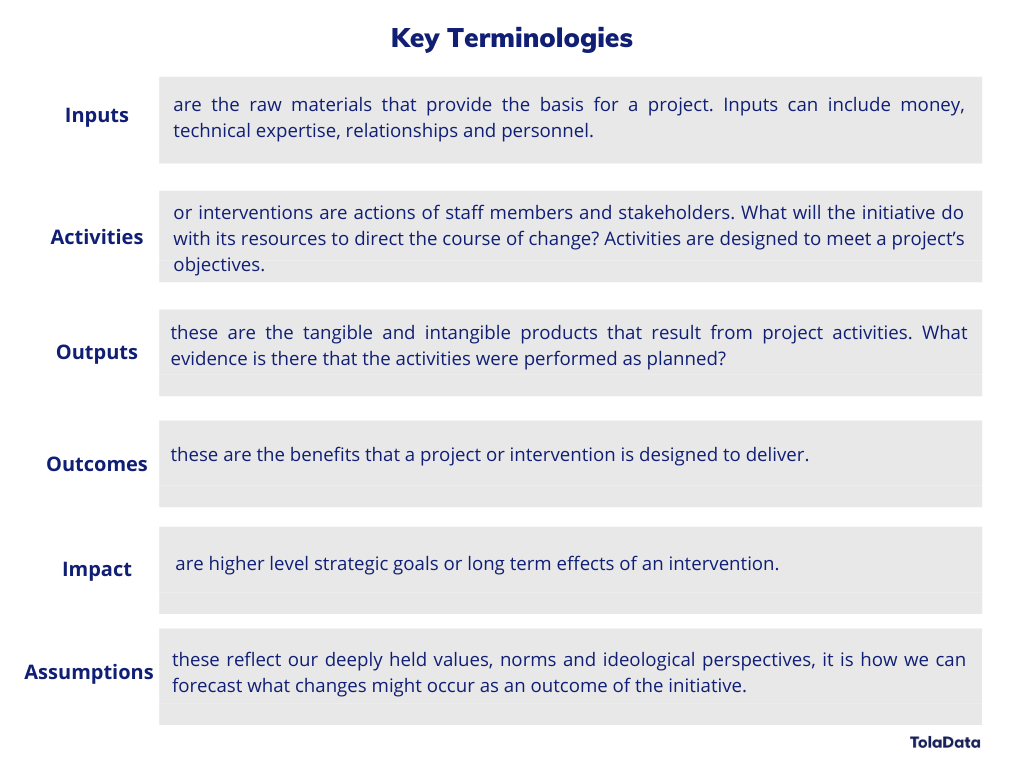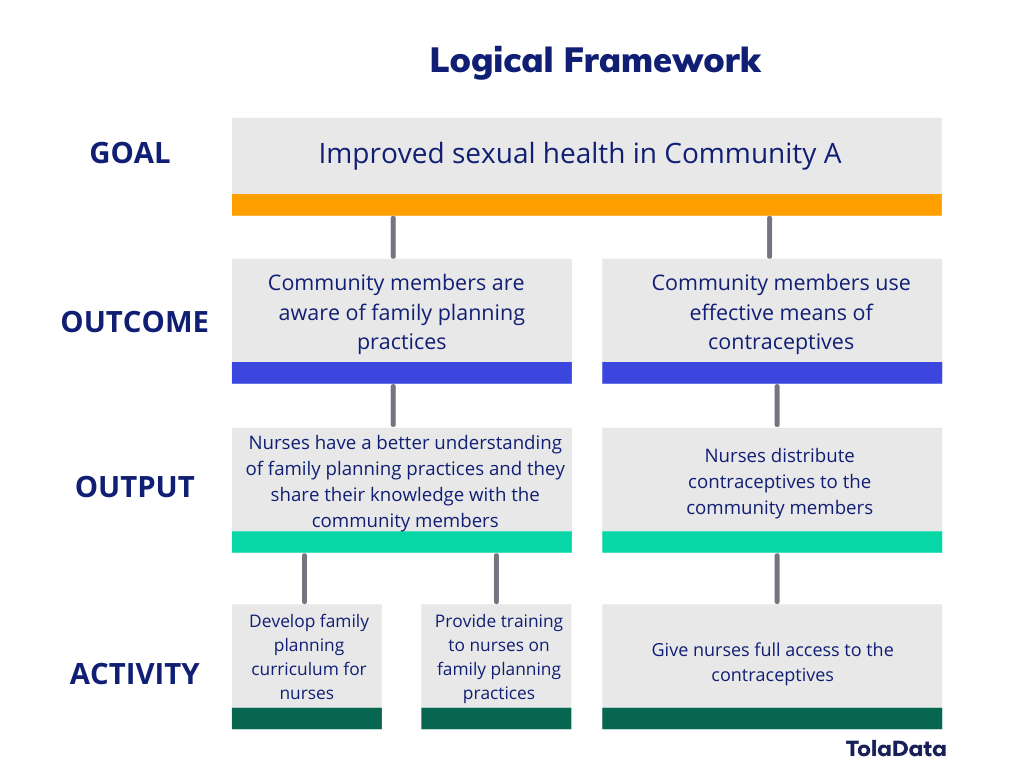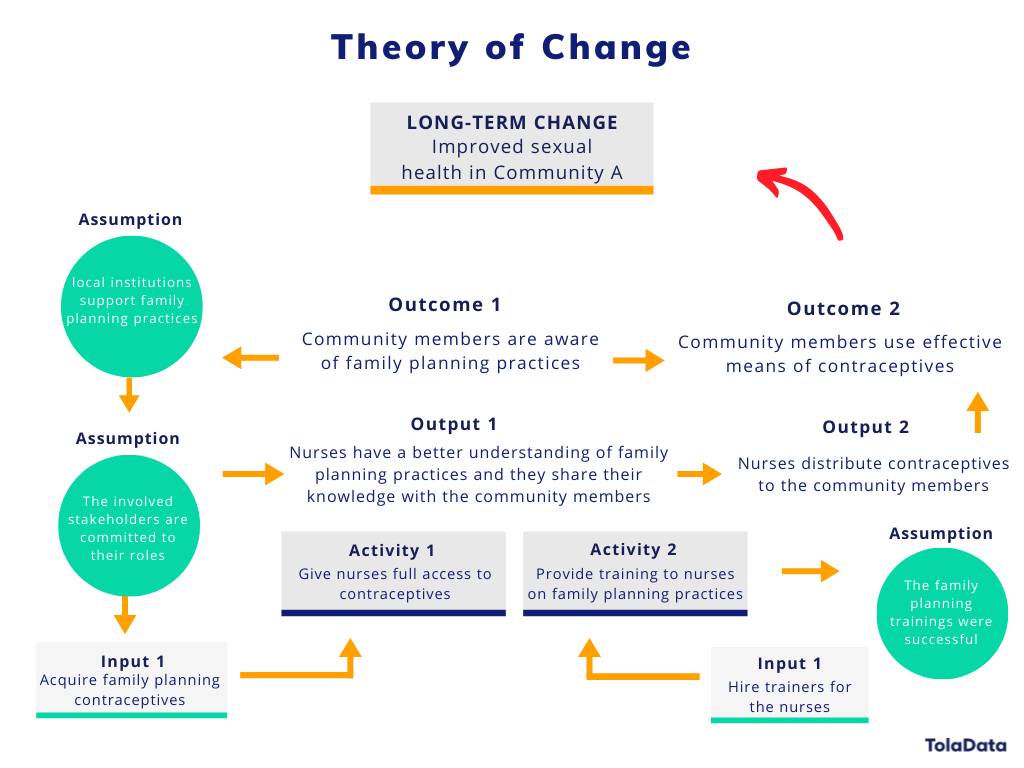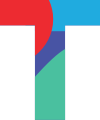Theory of Change vs. Logical Framework
- know the difference
January 27, 2021
Theory of Change (ToC) or Logical Framework? Given how both frameworks are used for the same purpose, it could be a difficult choice to make. However, if you know their unique attributes, their similarities and differences, it might make your decision making process a bit easier.
Both ToCs and logical Frameworks are widely popular and have been around for decades but neither term is clearly defined in the international development literature. Some say it’s okay to use these terms interchangeably as both are used to demonstrate how activities lead to results, whereas others say they are different in terms of structure, approach, rationale and usage.
Also, there is no set structure or rule to developing either of the two frameworks. Although they must include some key project components, there is also room for flexibility, both in terms of the process of developing them and the look of the final product. In this article, we will explore some similarities and differences between these two much debated approaches in Monitoring and Evaluation.
Before we jump into the main discussion, let us clarify some project related terms that we will be referring throughout the article.

What is a Logical Framework (LogFrame)?
The Logical Framework was first introduced in the late 1960s as a program design methodology for USAID projects. By the mid-1970s it was being used not only by USAID but also by Canadian and German development agencies as a tool to design a wide range of projects and as a framework for monitoring and evaluation. By the late 1980s, this model had become a requirement for funding of most international development programs, usage expanded to include other bilateral donors, United Nations agencies, and the World Bank, all of whom continue to utilize this tool.
Logical Frameworks also referred to as logframes operate at the project or program level and describe in a concrete way, how your project or program will create the desired change. Like most other frameworks, these are flexible and evolving – you can easily create one based on your current understanding of the project components and revise it as you go along.
The structure of a logframe is quite standardized – it is logical, sequential, to the point and has a simple linear chart format. It could be displayed as a matrix or as a flow chart. A logframe is visually engaging as it clearly illustrates the basic project components in the chart, which makes it easier for stakeholders to identify project inputs, activities, outputs, outcomes and impacts. In other words, through these components, indicators and milestones, the chart triggers questions to help everyone involved in the project to think about what they’re doing, what they hope to achieve and what they need to do to get all the important stuff done.
Some drawbacks of using a Logical Framework (LogFrame)
But some experts point out that a logframe could be quite limited and too simplistic in its scope and approach as it only zooms in on one specific pathway that your program deals with, meaning, it only points out activity A leads to outcome B, leaving out the possibilities of having additional outcomes, other than just outcome B. Therefore, there is limited flexibility and little room for the emergence of unexpected outcomes within a logframe. Moreover, it fails to explain the “Whys” – why activity A is expected to cause outcome B. Additionally, some experts also point out that a logframe often does not show the bigger impact of an intervention or the evidence that something has been achieved.
Here’s an example of a Logical Framework (LogFrame)
Let’s assume that our organisation has developed a project to implement in ‘Community A.’ Our overall project goal is to improve the sexual health of the community members. Let’s look at how we can show the relationships between our goals, outcomes, and activities in a logframe.


This is a simplified version of a Logical Framework. Depending on the nature of your project and the preference of your organization, the complexity and forms of logical framework may differ.
What is a Theory of Change (ToC)?
When talking about theory of change, we like to kick off with M&E expert, Piroska Bisits’ definition of the concept.
“ At the simplest level, a Theory of Change shows the big, messy “real world” picture, with all the possible pathways leading to change, and why you think they lead to change. Do you have evidence or is it an assumption.”
M&E expert, Piroska Bisits Tweet
According to the experts, theory of change seems to have emerged from the field of theory-driven evaluation, which came to prominence in the 1990’s. A ToC is best described as a flow chart or a web diagram that goes beyond a simplistic input-outcome notion of evaluation and seeks to demonstrate through all possible pathways how and why an intervention is assumed to lead to a desired end-result or a long-term impact.
Like a logical framework or a results framework, a ToC is also a tool used to design and evaluate projects by mapping out the logical sequence of an initiative from goals, inputs, activities to outcomes but comparatively ToC is a much more comprehensive methodology which shows a much bigger picture.
While demonstrating the connection between activities and outcomes, ToC also uses narratives to depict issues within a project that you can and cannot control. It articulates how change happens in the wider context, including the culture and power relations in which a specific project will take place; clarifies the organisation’s role in contributing to change, and defines and tests critical assumptions about behaviour, causal relations and contexts and as much as possible and supports these assumptions by evidence. A ToC is often used by organisations working in multiple sectors and in different thematic areas on complex projects or programs.
Some drawbacks of using a Theory of Change (ToC)
Compared to other approaches, a ToC requires vast amounts of data, greater time investment, deeper critical reflection, logical thinking and frequent exchange of dialogue amongst colleagues and stakeholders. It also requires an honest approach to answer difficult questions and identify assumptions and hypotheses about how your efforts might influence change, given the social and political circumstances, uncertainties and complexities that surround the initiatives.
Hypothesis and assumptions are unique attributes of ToCs and these really help the team members to sketch out a broader picture of their intervention, however, when there’s too many assumptions, it could also cause a lot of confusion and could lead the team in many different directions. Many critics point out that due to ToC’s theory driven nature, it is sometimes unclear whether a ToC evaluates the program itself or the program’s underlying theory.
Here’s an example of a Theory of Change (ToC)
Taking the same scenario from our previous logical framework example, we have created this simplified version of a Theory of Change. You will notice how a ToC is much more complex and detailed than a logical framework.


This is a simplified version of a theory of change. Depending on the nature of your project and the preference of your organization, the complexity and forms of ToCs may differ.
Similarities between Theory of Change (ToC) and Logical Framework (LogFrame)
We have already seen how ToCs and logical frameworks use slightly different approaches, but if you look deeper you will notice that there is also significant overlap between these two models. Both are used to improve our value-for-money, both are tied to an organisation’s overarching mission and both rest on a foundation of logic – specifically, the logic of how change happens. Let’s explore some common features.
- Both are used for planning, monitoring and evaluation of projects.
- Both can greatly improve project design and outcomes.
- Both identify the main components of the project (inputs, activities, outputs, outcomes) and demonstrate the relationship between these elements to acknowledge and implement all of the steps it will take to deliver the results you want to see in the world.
- Both frameworks enable you to measure, track and quantify your progress and your impact.
- Both help you identify and explain why your strategy is a good solution to the problem at hand.
- Both are generally represented in the form of visual charts, graphs and diagrams.
- Both Logframe and ToC are outcome-focused – it answers the question, “what do you want to accomplish?
- Both depend on a set of assumptions about why these strategies should make a difference in the desired outcomes.
- Both are grounded in your analysis of what it takes to create the change, and your understanding of why conditions are as they are now.
- With both models, project members can identify intermediate effects and define measurable indicators for them. But you must note that some logframes may not include indicators, it varies on a case by case basis.
- Both help to communicate your interventions and outcomes more effectively to your team, donors, stakeholders and local beneficiaries.
- Both models enhance accountability by keeping stakeholders focused on outcomes.
- Both need to be regularly updated to reflect the project changes over time.
Differences between Theory of Change (ToC) and Logical Framework
Like we mentioned above both ToC and Logical Framework are tools used to describe how programs lead to results, however, if we dive deeper, we will notice the differences in terms of their structure, approach, rationale and usage. Here’s a list of features unique to each model.
Logical Framework
Theory of Change
|
|
|
|
|
|
|
|
|
|
|
|
|
|
|
|
|
|
How do you know which model is right for you?
When it comes to picking a model, it’s not an easy task, especially when both theory of change and logical framework are used for the same purpose and both models help you understand how your initiatives will bring about changes and the results you expect to see for the community and its people.
So, the answer to this question is – it really depends on your organisation’s preference and capacity. The complexity of your intervention, and most importantly the willingness to commit a certain amount of time or otherwise, and the availability of resources, skills and knowledge within your organisation could also influence your choice. Some organisations may even opt for both, given the size and scope of their interventions. But no matter which approach you choose to go with, the aim of using models as such should be to keep all the staff members and stakeholders moving in the same direction by providing a common language and point of reference.
We hope this article was helpful. Please let us know if you have any points to add to the list or any comments or suggestions to share. Also, we’d love to know which framework your organisation uses to plan, monitor and evaluate projects.
Key References:
- Theory of change vs. logical framework – What’s the difference? Tools4Dev.
- Developing a Logic Model or Theory of Change, Community Toolbox.
- Using logic models and theories of change better in evaluation, BetterEvaluation.
- The Aspen Institute Roundtable on Community Change, the community builder’s approach to ToC.
- Review of using Theory of Change in International Development, DFID.
- The Logical Framework, USAID
By Chandani Lopez Peralta, Content Marketing Manager at TolaData.

Simple and straight forward explanation! 🙏🏾
Glad you found it helpful, Mandisa!
In my view the two should be possible to use together. The goal hierarchy (=Logic model/Results framework) shows the simple picture and the delimited context of the programme. The TOC takes into consideration influencing factors which may assist or hinder the programme both achieving its outputs and outcomes, and these to lead to the lasting change that is being targeted.
We absolutely agree with you, Mari and thank you for your input! Many bigger programs do use the combination of the two in the form of a “Programme Analytical Framework.”
Very interesting read. Almost as if you read my mind as I developed the Progressive Outcomes Scale (POS) Logic Model framework.
Glad to hear that, Quisha!
Very descriptive and easy to use.
Both approaches are governed by mechanical philosophy although ToC makes assumptions more explicit. The issue however is what Charles Peirce calls 2ndness or what Doug Anderson calls resistance. Both Logfram and ToC (Theory of Change not Theory of Constraints) are idealistic and confuse goals, activities and results. This is why it is difficult to understand what is goal and what is outcome as though it is a tautology. In reality they are never the same because of resistance. Both approaches have pushed international development into a deep muddle that is hard to come out of. The same with the so called M4D which is a fictitious approach to markets. In ToC constraints are just nuisances that must be removed and by no means a focus point. What we need is a totally new approach to complexity and variety which is far beyond the simplistic thinking behind log frames and ToC. The focus must be on resistance or constraints (not just the Theory of Constraints which by the way is a far more useful model) and not on either goals or outcomes which are fictions or just models which are just description of absences and not an analysis of the presence.